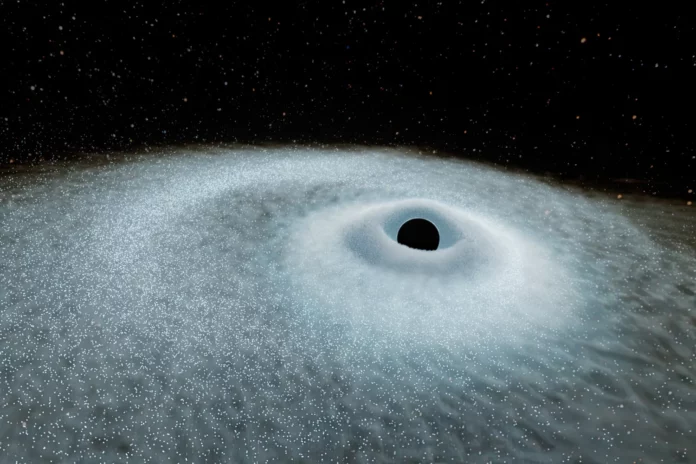Astronomers in Hawaii have discovered a new type of explosion, and they are the most energetic stellar explosions ever recorded.
Meet “extreme nuclear transients” (ENTs): when supermassive black holes tear apart stars at least three times heavier than the Sun, causing a huge release of energy. An international team of researchers describes the discovery of this newly observed phenomenon in a study published Wednesday in the journal Science Advances, shedding light on events that will help astronomers study the distant universe.
“We’ve been watching stars get ripped apart by tidal disturbances for more than a decade, but these tidal disturbances are a whole different animal, reaching brightnesses nearly ten times greater than we normally see,” said Jason Hinkle, lead author of the study and a graduate student at the University of Hawaii’s Institute of Astronomy, in a statement from the W.M. Keck Observatory. Tidal disturbances are made up of supermassive black holes that tear apart any star that wanders too close, so ENTs are a kind of tidal disturbance.
“ENTs are not only much brighter than normal tidal explosions, but they also stay bright for years, far exceeding even the brightest known supernova explosions in energy,” he added.
Their discovery happened almost by accident. While searching for long-lasting flares projected from the center of galaxies in data from the European Space Agency’s Gaia mission, Hinkle came across two strange signals from 2016 and 2018 that marked the beginning of a multi-year study. At the same time, two separate teams discovered a similar outburst in 2020 in an astronomical study called the Zwicky Transient Facility (ZTF). Additional data from the W. M. Keck Observatory in Hawaii confirmed the similarity of the 2020 event to the two Gaia events.
Given that these events released more energy than any supernova known to science, Hinkle and his colleagues concluded that they were not ordinary stellar explosions. The enormous energy release and the shape of the light curves indicated the presence of a supermassive black hole that was actively absorbing matter, a process called accretion. However, unlike normal black hole accretion, in which the surrounding matter heats up and emits irregular light, astronomers found that these astrophysical events are clearly related to a supermassive black hole that is systematically crushing and swallowing a giant star.
ENTs are the most energetic known explosions in the Universe. Gaia18cdj, the most powerful ENT documented, released 25 times more energy than the most powerful supernovae known to science. In a broader sense, each supernova emits as much energy as 100 suns emit over their entire 10-billion-year lifetime. By comparison, an ordinary supernova typically releases energy similar to that of a single Sun.
“These supernovae don’t just mark the dramatic end of a massive star’s life,” explains Hinkle. “They illuminate the processes responsible for the growth of the largest black holes in the universe. Supernovae are also at least 10 million times less common than supernovae. Nevertheless, their massive energy releases will prove extremely useful for astronomers studying distant massive black holes.
“Because they’re so bright, we can see them over vast cosmic distances, and in astronomy, looking into the distance means looking into the past,” says Benjamin Shappi, co-author of the study and an associate professor at the University of Hawaii Institute of Astronomy. “By observing these prolonged outbursts, we gain insight into the growth of black holes during a key epoch known as the cosmic noon, when the Universe was half its current age, when galaxies formed stars and fed their supermassive black holes 10 times more vigorously than today.”
From theories that black holes lead to white holes, to the suggestion that the universe could exist in a black hole and that supermassive black holes could replace particle colliders, the recent study joins a host of research that is shedding light on one of the most mysterious components of our universe.









